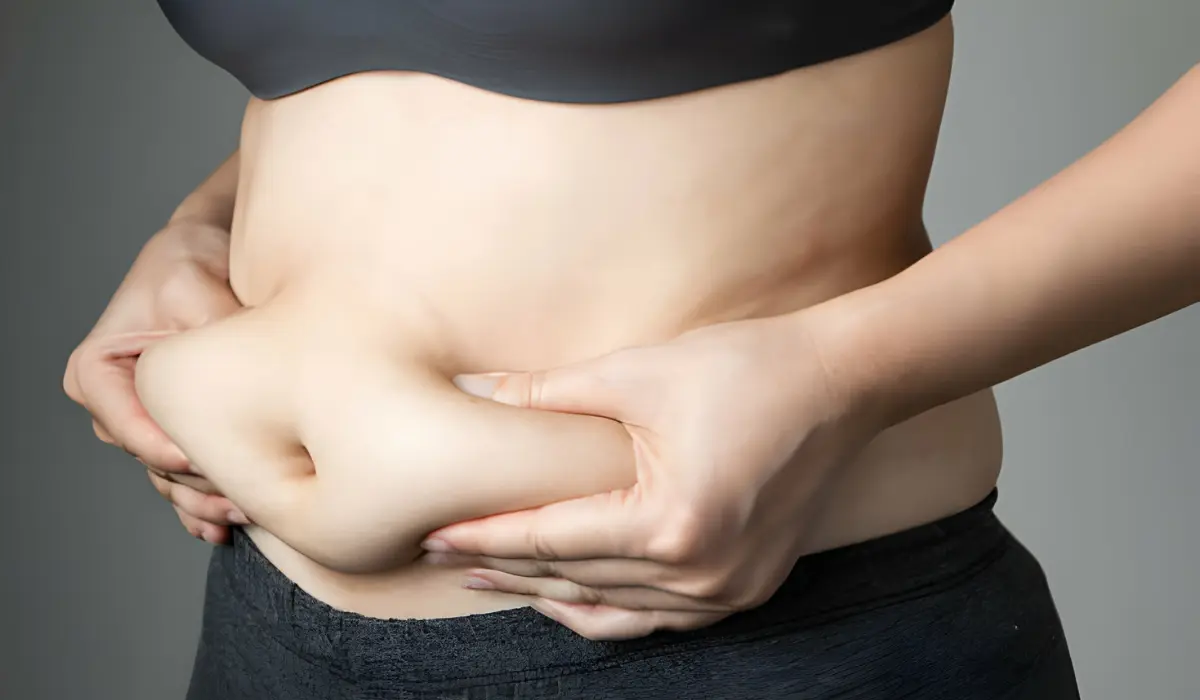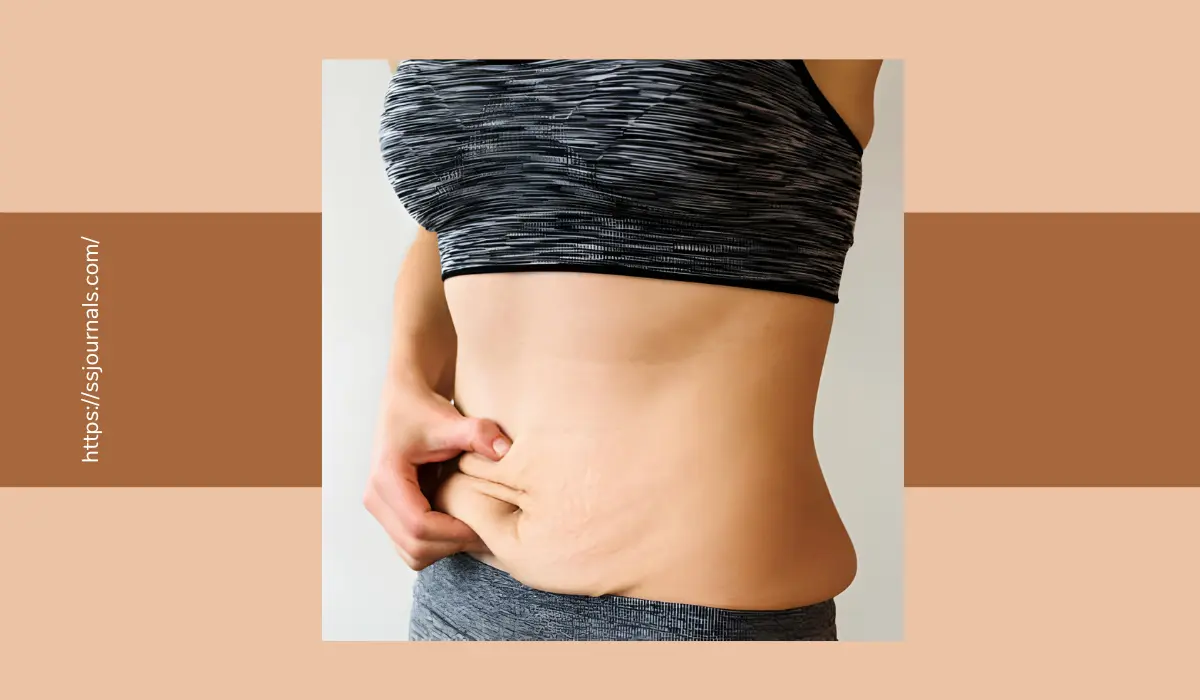When people lose a significant amount of weight, they are often left with excess loose skin or fat deposits. This can lead to the question – is it loose skin or fat? There are important differences between loose skin vs. fat. Understanding whether you have remaining stubborn fat or loose skin can help guide your next steps.
Loose skin after weight loss occurs when the elasticity of the skin has decreased after being stretched out for some time. Rapid weight loss can contribute to loose sagging skin. Fat deposits are made up of adipose tissue which stores energy. Although stubborn fat deposits may remain after weight loss, they have a different texture and appearance compared to loose skin.
Loose, Sagging Skin, or Fat Deposits? Key Ways to Tell

So how do you tell if it is loose skin or fat? One way to distinguish between loose skin and fat is by carefully looking at the appearance. loose skin often looks thin, wrinkled, or crepey whereas fat deposits appear smooth and thick. Loose skin lacks elasticity and does not bounce back when pressed. Fat deposits still have padding and spring back into place. The texture of loose skin can resemble crinkled fabric whereas fat deposits feel smooth and spongy.
Typically, loose skin gathers whereas fat deposits bulge outwards. loose skin after weight loss tends to hang while fat protrudes. The skin may feel loose while fat deposits remain rounded and full. Skin can appear draped over body areas after significant fat loss. Carefully observing the texture, elasticity, thickness and overall appearance can help decipher between remaining fat and loose skin.
Causes Of Loose Skin vs Fat
What causes loose skin versus fat deposits after weight loss? Loose skin is caused by losing fat which allows the skin to lose elasticity, become detached from muscle, and hang loosely over the body. Rapid weight loss and significant fat reduction over a short time can severely impact skin elasticity.
Fat deposits result from stored adipose tissue which cushions and insulates the body. Genetics, hormones, diet, decreased activity, and other factors cause fat storage. remaining fat after weight loss indicates more fat cells than what diet and exercise have been able to eliminate. Understanding the root causes of loose skin and fat can help guide optimal solutions.
1. Health Impact
It is also important to consider the potential health implications. Loose skin is considered a cosmetic issue rather than a medical concern. loose skin does not directly impact overall health or body functions. However, remaining fat deposits can increase the risk of high blood pressure, heart disease, high cholesterol, stroke, diabetes, and certain cancers. Excess body fat puts strain on the body even when someone has lost significant weight and achieved a healthy BMI. Consulting with a doctor can help assess health markers to determine if remaining fat may cause potential issues.
2. Treatment Options
If you are wondering – does loose fat skin go away? The good news is there are treatment options for both loose skin and fat deposits. However, the treatments do differ. For loose skin, surgical procedures like tummy tucks, lower body lifts, arm lifts, and body contouring are the most effective approaches. Diet and exercise alone will not tighten or remove excess loose skin. Skin removal surgery eliminates loose hanging skin for improved body contours.
Fat deposits often respond better to diet changes, increased activity, strength training, and high-intensity interval training (HIIT). Nutritional supplements like conjugated linoleic acid (CLA) and topical skin-firming products may also help. Consulting professionals can help determine the best treatments.
3. Natural Skin Tightening
Many people wonder – how can I tighten my skin naturally? While surgery remains the gold standard, some home remedies may temporarily improve skin tightness. Skin-firming creams containing collagen and elastin fibers claim to improve elasticity and possibly tighten loose skin.
Dry body brushing boosts blood circulation which carries nutrients to aging skin. A healthy diet high in protein and antioxidants combined with regular exercise helps skin function optimally. Staying well hydrated plumps up skin cells which creates a firmer appearance. Although these cannot lift loose skin, they may temporarily help it feel and look smoother.
Loose Skin vs Fat Exercise
What exercises help target loose skin versus fat? Cardiovascular exercise burns overall body fat by creating a calorie deficit. Adding strength training builds metabolically active muscle mass which further burns fat in a resting state. High-intensity interval training alternates between bursts of rigorous and less intense activity to torch fat.
Targeted abdominal exercises like crunches, planks, or sit-ups tone the core muscles but do not reduce fat. However, spot reduction of fat in problem areas remains difficult. Creating an ongoing calorie deficit through diet and a wide variety of effective exercises works best for fat loss. Unfortunately, no amount of abdominal crunches will tighten loose stomach skin after extreme weight loss.
Conclusion
In summary, understanding the differences between loose skin and fat can help people who have lost substantial weight determine the best solutions. Observing the texture, elasticity, firmness and overall appearance offers clues to decipher loose drooping skin from remaining fat deposits.
While loose skin poses more of a cosmetic nuisance, carrying excess fat increases health risks. Knowing what causes loose skin versus fat storage guides proper treatment. Although challenging, remaining fat often responds better to continued diet, exercise, and lifestyle changes compared to loose skin. Once skin has lost elasticity, surgery offers the only permanent solution while natural remedies may provide temporary improvements.
Overall a multifaceted approach works best. Maintaining diet and exercise helps manage fat while considering skin removal surgery eliminates excess loose skin for improved body contours and self-confidence after major weight loss. The journey continues well beyond the numbers on the scale.
Does the treatment for stubborn body fat or loose skin get easier over time? Share your experience below.

